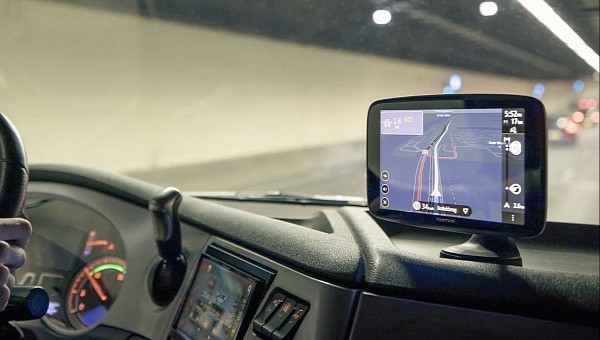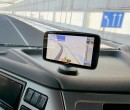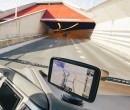While Google Maps is already the world’s number one mobile navigation solution and continues to evolve with new-generation features, it still lacks the functionality that many people have been asking for years.
It’s support for truck navigation, something that would essentially let Google Maps provide personalized routing based on vehicle dimensions, cargo type, weight, and so on.
And while Google doesn’t even seem to be remotely interested in updating Google Maps with such capabilities, other navigation experts out there are already offering super-advanced features aimed at trucks and RVs.
One of them is TomTom, whose mobile software is often considered the best alternative to Google Maps. TomTom, however, has developed a fully-featured navigation SDK, therefore making its way to other navigation solutions as well.
The latest collaboration on this front is with PTV Group, with TomTom announcing that its Navigation SDK will be integrated into the PTV Truck Navigation G2 professional truck navigation app.
Thanks to TomTom capabilities, the updated navigation solution will offer optimized truck routing, while also packing advanced features specifically aimed at fleets. Drivers can be warned of changing traffic conditions, while also powering a permanent connection between the back office and the vehicles on the road.
Needless to say, the likes of TomTom and Sygic investing in truck navigation is living proof that Google is ignoring a growing market. Despite the user feedback in this regard, that is, as support for truck navigation in Google Maps is one of the most requested features so far.
Unfortunately, drivers of large vehicles, including here lorries and RVs, sometimes rely on Google Maps anyway, without knowing that the app only offers guidance for small passenger vehicles. As a result, they occasionally end up stuck on narrow roads, simply because Google Maps didn’t take into account the dimensions of their vehicles and sent them to roads where a typical passenger car would fit just right.
And while Google doesn’t even seem to be remotely interested in updating Google Maps with such capabilities, other navigation experts out there are already offering super-advanced features aimed at trucks and RVs.
One of them is TomTom, whose mobile software is often considered the best alternative to Google Maps. TomTom, however, has developed a fully-featured navigation SDK, therefore making its way to other navigation solutions as well.
The latest collaboration on this front is with PTV Group, with TomTom announcing that its Navigation SDK will be integrated into the PTV Truck Navigation G2 professional truck navigation app.
Thanks to TomTom capabilities, the updated navigation solution will offer optimized truck routing, while also packing advanced features specifically aimed at fleets. Drivers can be warned of changing traffic conditions, while also powering a permanent connection between the back office and the vehicles on the road.
Needless to say, the likes of TomTom and Sygic investing in truck navigation is living proof that Google is ignoring a growing market. Despite the user feedback in this regard, that is, as support for truck navigation in Google Maps is one of the most requested features so far.
Unfortunately, drivers of large vehicles, including here lorries and RVs, sometimes rely on Google Maps anyway, without knowing that the app only offers guidance for small passenger vehicles. As a result, they occasionally end up stuck on narrow roads, simply because Google Maps didn’t take into account the dimensions of their vehicles and sent them to roads where a typical passenger car would fit just right.






